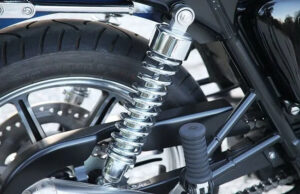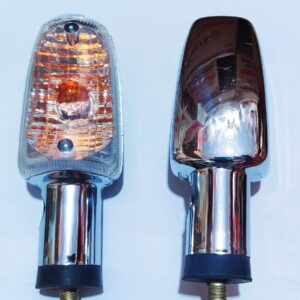The Ultimate Guide to Understanding Motorcycle Suspension Systems
Demystifying Motorcycle Suspension Systems: A Comprehensive Guide

Introduction
When it comes to motorcycle performance, handling, and comfort, one of the most critical but often misunderstood components is the suspension system. This comprehensive guide will unravel the intricacies of motorcycle suspension systems, delving into the various types available and their profound influence on your ride quality and handling. Additionally, we’ll explore how to fine-tune suspension settings to match different riding conditions, ensuring your motorcycle performs at its peak.
The ABCs of Motorcycle Suspension Systems:
1. Types of Suspension Systems: Motorcycle suspension systems come in various configurations, each with its own characteristics and applications:
- Telescopic Forks: This common design features a pair of fork tubes and is known for its simplicity and lightweight construction.
- Single Shock Absorber: Found on the rear of many bikes, this monoshock design offers versatility and adjustability.
- Upside-Down (USD) Forks: Inverted forks, with the thicker part at the bottom, provide greater strength and precise control, often seen on sportier models.
- Dual Shock Absorbers: Some motorcycles, especially cruisers and classic models, employ two shock absorbers at the rear.
2. Impact on Ride Quality and Handling: Understanding how different suspension systems affect your ride is crucial:
- Telescopic forks tend to provide a smoother, more comfortable ride on a variety of surfaces.
- Monoshocks and USD forks offer better handling and are often favored in performance-oriented motorcycles.
- Dual shock absorbers are known for their stability and are popular on cruiser-style bikes.
Adjusting Suspension Settings for Optimal Performance:
- Preload Adjustment: Preload settings determine how much the suspension compresses under load. Adjusting preload is crucial for achieving proper sag and ride height.
- Increase preload for heavier loads or two-up riding.
- Decrease preload for a softer ride when riding solo or with lighter cargo.
- Compression and Rebound Damping: Compression damping controls how fast the suspension compresses, while rebound damping controls how fast it returns to its original position. Finding the right balance is essential for handling and comfort:
- Increase compression damping for firmer control during aggressive riding.
- Increase rebound damping for a quicker return to maintain tire contact with the road.
- Suspension Sag: Sag measures how much the suspension compresses under the bike’s weight. Proper sag adjustment ensures your bike handles predictably:
- Front sag should typically be around 30-35% of the total travel.
- Rear sag varies but often falls within the 25-30% range.
- Terrain-Specific Adjustments: Tailor your suspension settings to the terrain:
- On rough or off-road terrain, soften the suspension to absorb shocks better.
- On smooth, twisty roads, stiffen the suspension for improved cornering.
Installation and Maintenance
- Professional Installation: While some motorcycle enthusiasts enjoy hands-on maintenance, certain parts may require specialized tools and expertise for proper installation. If you’re unsure, it’s best to have a qualified mechanic handle the installation.
- Routine Maintenance: After installing new parts, incorporate regular maintenance practices to ensure their longevity and optimal performance. This includes proper lubrication, cleaning, and periodic inspections.
Regular Maintenance and Fine-Tuning:
- Routine Inspections: Regularly inspect suspension components for wear, leaks, and damage. Any issues should be addressed promptly to maintain optimal performance and safety.
- Periodic Fluid Replacement: Shock absorbers and forks contain oil that degrades over time. Periodic fluid replacement ensures consistent damping performance.
CONCLUSION
Understanding your motorcycle’s suspension system and its impact on ride quality and handling is pivotal to becoming a more skilled and safe rider. By adjusting suspension settings to match different riding conditions and conducting regular maintenance, you can unlock your motorcycle’s full potential, enjoying a smoother, more responsive, and safer ride. Remember, a well-maintained and properly adjusted suspension system not only enhances performance but also enhances your overall riding experience.





